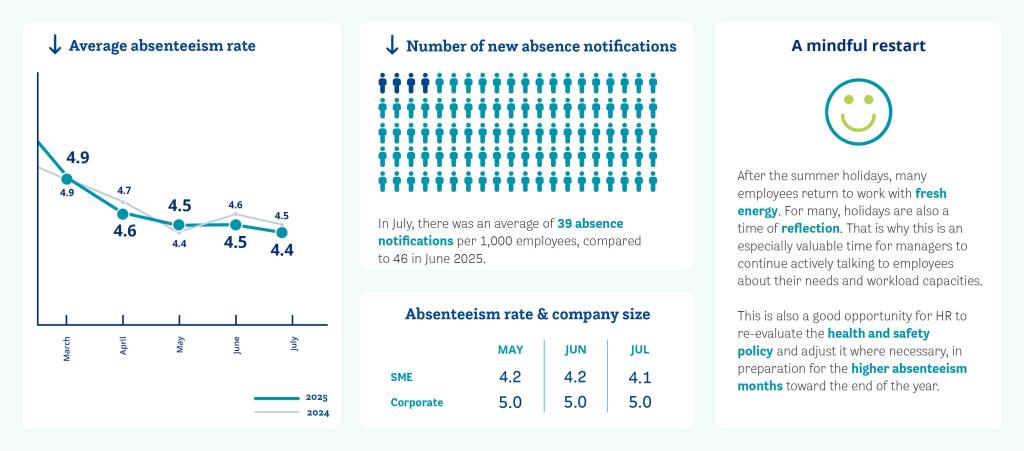July absenteeism falls: fresh energy after summer holidays the foundation for autumn

Visible decline due to summer holidays
In July, there was an average of 39 sick days registered per 1,000 employees. This is down from June, when it was 46 per 1,000. According to Iris Homeijer, Occupational Physician and Director of Medical Affairs at HumanCapitalCare, the reason for the drop is easy to explain: ‘We see the sharpest decline in sectors where collective summer closures are common, such as manufacturing, construction and education.’
Fresh energy as a source for reflection
After the summer holidays, many employees return to work with fresh energy. For many people, the summer holidays are also a time for personal reflection; a time to consider work, balance and what energises or drains them. ‘That’s why it’s important for managers to actively engage in conversation with their employees, especially at this time. Not just a one-off check-in, but an ongoing dialogue about how the work fits in with the needs and workload capacity of employees,’ explains Homeijer.
Absenteeism in first quarters of 2025
In the first quarter of 2025, absences were somewhat higher than in the same period a year earlier. This is despite the fact that the second quarter showed a slight decline. Over the entire period from July 2024 to June 2025, absenteeism rose slightly, from 4.7% to 4.8%. It is worth noting that 12% of employees reported in sick three times or more in a single year. This relatively small group accounts for no less than 44% of all sick days.
Small organisations: Low absenteeism, big impact
Although the figures represent a national average, there are significant differences between the various organisations. Companies with up to 10 employees in particular rarely report absences. Two-thirds of these organisations recorded hardly any absenteeism in the past year. This is reflected in the absenteeism rate: for organisations with 1 to 10 employees, this figure is 4.0%, while for organisations with more than 500 employees, it is 5.4%. At the same time, one single colleague on a long-term sick leave has a major operational impact, particularly in these smaller organisations.
Getting prepared for the more uncertain months ahead
The quiet summer period offers organisations the opportunity to make additional preparations for the months towards the end of the year, which are more prone to absenteeism. ‘Employers have a lot to gain by paying attention to prevention, vitality and sustainable employability on a systematic basis now,’ says Homeijer. ‘Proper preparation helps to prevent peaks in absences and ensure work continuity, especially in smaller teams where the impact of absenteeism is felt immediately. For HR professionals, this is also an excellent time to critically review the existing health and safety policies and adjust them where necessary.’